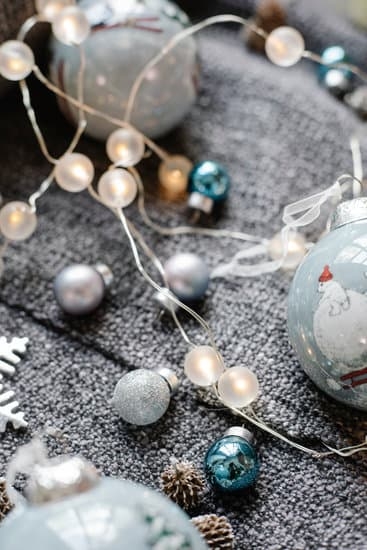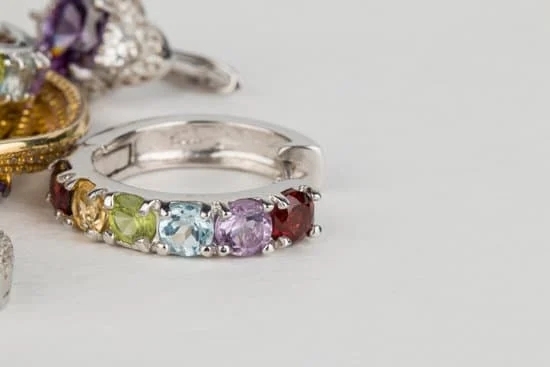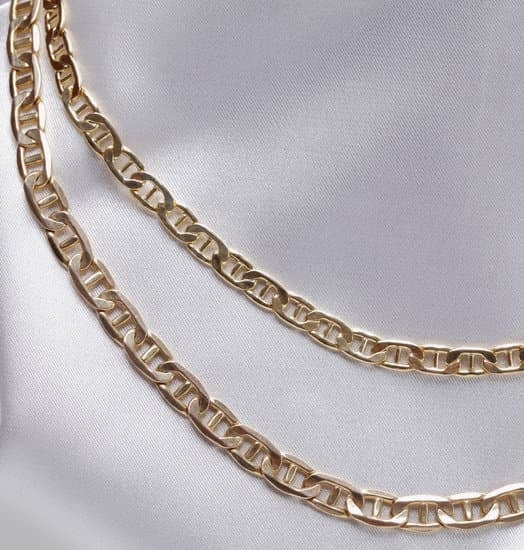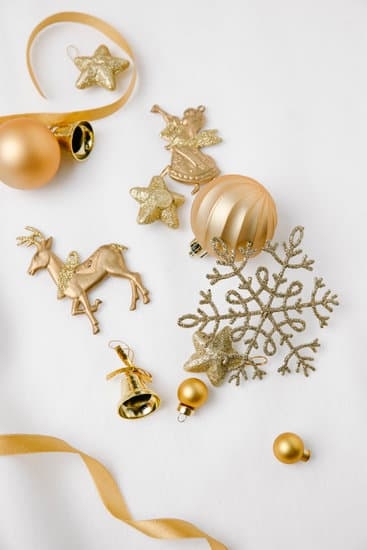The history of Asian jewelry is a rich tapestry that spans centuries and encompasses a wide variety of cultures, traditions, and artistic styles. From ancient civilizations to modern times, Asian jewelry has played a significant role in the cultural, social, and religious aspects of life. In this article, we will delve into the fascinating world of Asian jewelry, exploring its evolution, symbolism, techniques, and influence on global fashion trends.
Ancient Asian jewelry provides insights into the sophisticated craftsmanship and artistic sensibilities of civilizations such as the Indus Valley Civilization and Ancient China. These early examples reveal the intricate designs and use of precious materials that have laid the foundation for the exquisite jewelry tradition in Asia.
Symbolism and meaning are integral to understanding the cultural significance of Asian jewelry. Each piece is often imbued with deep spiritual and symbolic connotations that reflect the beliefs, values, and customs of diverse Asian societies. Additionally, the techniques and materials used in creating traditional Asian jewelry showcase the remarkable craftsmanship and attention to detail that have been passed down through generations.
As we embark on this exploration of the history of Asian jewelry, we will also examine how these timeless pieces have evolved from traditional styles to modern interpretations. Furthermore, we will uncover the influence of Asian jewelry on global fashion trends and discover the stories behind iconic designs that have captivated people around the world. Throughout this journey, we will appreciate efforts to preserve and revive this invaluable heritage for future generations to cherish.
Ancient Asian Jewelry
Indus Valley Civilization
The history of Asian jewelry dates back to the ancient civilizations of the region, with one of the earliest known examples coming from the the Indus Valley Civilization. Excavations at sites such as Mohenjo-daro and Harappa have unearthed intricate jewelry pieces made from materials such as gold, silver, and precious gemstones. These artifacts provide valuable insights into the craftsmanship and aesthetic preferences of this ancient civilization, showcasing a high level of skill in metalworking and an appreciation for adornment.
Ancient China
Ancient China also holds a rich history of jewelry-making, with archaeological findings revealing a long tradition of intricate designs and symbolic meanings. Jade, in particular, held significant cultural value and was often used to create elaborate jewelry pieces for the ruling class.
From ornate hairpins to intricately carved pendants, these artifacts reflect the craftsmanship and artistry of ancient Chinese artisans. The use of symbolism in Chinese jewelry also played a crucial role, with motifs such as dragons, phoenixes, and lotus flowers carrying deep cultural significance.
Influence on Contemporary Designs
The techniques and designs developed during these ancient periods continue to influence contemporary Asian jewelry-making. The legacy of craftsmanship and attention to detail still resonate in modern interpretations of traditional styles, showcasing the enduring influence of ancient Asian jewelry on today’s fashion trends. Whether it’s reimagining traditional motifs or reviving ancient techniques, the history of Asian jewelry continues to inspire innovative creations that honor the cultural heritage of the region.
Symbolism and Meaning
Asian jewelry holds a deep cultural significance and is often imbued with rich symbolism and meanings that reflect the beliefs, traditions, and values of the diverse Asian cultures. Understanding the symbolism and meaning behind Asian jewelry provides valuable insights into the customs and rituals of the past, as well as the aesthetics and spiritual significance that continue to influence jewelry-making in Asia today.
Throughout history, different Asian cultures have used jewelry to convey a wide range of messages, from social status and wealth to religious devotion and protection. Here are some common symbols and meanings found in Asian jewelry:
- The lotus flower: In many Asian cultures, the lotus flower symbolizes purity, enlightenment, and spiritual awakening. It is a popular motif in Indian, Chinese, and Southeast Asian jewelry, often representing beauty and grace emerging from muddy waters.
- Dragon motifs: In Chinese culture, the dragon is a symbol of power, strength, and good luck. Dragon motifs are commonly found in Chinese jewelry designs, especially among the imperial dynasties where they were worn as symbols of authority.
- Jade: Revered for its durability and beauty, jade has been an important material in East Asian jewelry for centuries. In Chinese culture, jade symbolizes virtue, harmony, and longevity. It is often used to create intricate carvings or beading in traditional jewelry pieces.
Understanding the symbolic meanings behind different elements in Asian jewelry enhances our appreciation for their cultural significance and artistic expressions. These symbols continue to inspire contemporary Asian jewelry designers who seek to preserve these traditions while adapting them to modern tastes. By recognizing the symbolism and meaning behind Asian jewelry, we can gain a deeper understanding of the histories and traditions that have shaped these beautiful art forms over time.
Techniques and Materials
Asian jewelry has a long and rich history, with traditional craftsmanship playing a significant role in creating exquisite pieces that are highly regarded around the world. The techniques and materials used in Asian jewelry have been passed down through generations, showcasing the cultural and artistic heritage of various Asian civilizations.
The history of Asian jewelry is intertwined with the use of precious metals such as gold, silver, and copper, along with gemstones like pearls, jade, and turquoise. These materials were meticulously transformed into intricate designs using traditional techniques such as filigree, granulation, enameling, and carving. Each method required exceptional skill and precision, resulting in stunning pieces that reflected the craftsmanship of ancient Asian artisans.
One notable example of traditional craftsmanship in Asian jewelry is the art of jade carving in China. Dating back to the Neolithic period, Chinese artisans have been creating exquisite jade ornaments using intricate carving techniques. In India, the technique of Kundan jewelry involves setting gemstones into gold foils to create elaborate designs that are revered for their beauty and craftsmanship. These traditional methods continue to be practiced today, preserving the historical significance of Asian jewelry.
Evolution of Asian Jewelry
The history of Asian jewelry is a fascinating journey that dates back thousands of years, with each region contributing its unique styles and techniques. The evolution of Asian jewelry from traditional to modern styles has been heavily influenced by cultural, social, and technological changes, resulting in an eclectic mix of designs and craftsmanship that continues to captivate the world.
Throughout history, Asian jewelry has undergone a remarkable transformation, reflecting the changing tastes and lifestyles of the people. From intricate gold ornaments worn by ancient civilizations to the delicate jade pieces favored by Chinese royalty, the evolution of Asian jewelry showcases a rich tapestry of traditions and aesthetics. As societies modernized and globalized, the demand for more contemporary and versatile jewelry also emerged, leading to the fusion of traditional craftsmanship with modern design sensibilities.
To understand the evolution of Asian jewelry from traditional to modern styles, it is important to explore the key influences that have shaped its development. These include technological advancements in metalworking and gemstone cutting, as well as cultural exchange through trade routes and colonial encounters. Additionally, shifting societal norms and fashion trends have played a significant role in reshaping the aesthetic preferences for Asian jewelry over time. Below are some notable examples of this evolution:
- Traditional Techniques: Intricate filigree work in Indian jewelry
- Modern Materials: Innovative use of stainless steel in Japanese minimalist designs
- Fusion Styles: Contemporary reinterpretations of ancient motifs in Korean hanbok accessories
As we delve deeper into the evolution of Asian jewelry, it becomes evident that this art form continues to evolve while staying rooted in its rich heritage. From handcrafted heirlooms passed down through generations to avant-garde creations that push artistic boundaries, Asian jewelry remains a timeless expression of creativity and cultural pride.
Influence of Asian Jewelry on Global Fashion Trends
Asian jewelry has a long and rich history that has had a lasting impact on global fashion trends. From the intricate designs of ancient civilizations to the modern styles of today, Asian jewelry continues to influence the world of fashion in significant ways.
Ancient Inspirations
The history of Asian jewelry dates back thousands of years, with ancient civilizations such as the Indus Valley and Ancient China producing stunning pieces that are still admired to this day. These ancient designs often feature symbols and motifs that hold deep cultural and spiritual significance, influencing global fashion with their timeless appeal.
Traditional Craftsmanship
One of the key factors behind the influence of Asian jewelry on global fashion is the traditional craftsmanship involved in making these pieces. Techniques such as filigree, granulation, and cloisonné have been passed down through generations, resulting in intricately detailed jewelry that captivates people around the world.
Modern Interpretations
While honoring its roots, Asian jewelry has also evolved to incorporate modern styles and materials, appealing to a wider audience and inspiring contemporary fashion trends. Designers continue to draw inspiration from traditional Asian jewelry, infusing their creations with elements that pay homage to its enduring legacy.
From red carpet events to everyday wear, the influence of Asian jewelry on global fashion trends remains evident. As we continue to appreciate and celebrate its history, it’s clear that Asian jewelry will continue to be a source of inspiration for generations to come.
Famous Asian Jewelry Pieces
Asian jewelry has a long and rich history, with many iconic designs that have stood the test of time. From ornate jade pieces in ancient China to intricate gold adornments in India, these famous jewelry pieces have stories that reflect the cultural and historical significance of their time.
One such famous Asian jewelry piece is the Hira-Odori Dance Jewels from Japan. These stunningly beautiful ornaments were worn by Maiko (apprentice Geisha) during the Hira-Odori dance, a traditional performance in Kyoto. The jewels typically feature intricate designs crafted from precious metals and adorned with gemstones, reflecting the craftsmanship and artistry of Japanese jewelry makers.
Another iconic Asian jewelry piece is the “Mangalsutra” from India, which holds immense cultural and spiritual significance for married women in Hindu tradition. This necklace typically features black and gold beads strung together with a central pendant, symbolizing the marital bond between husband and wife. The design and materials used in a Mangalsutra can vary based on regional customs, but the underlying essence remains the same.
The “Phuang Malai” from Thailand is yet another famous Asian jewelry piece known for its intricate craftsmanship. These elaborate garlands are made from fresh flowers or durable materials like jasmine, roses, or orchids woven together using traditional Thai techniques. They are often presented as offerings to deities or used as decorative ornaments during special occasions such as weddings or ceremonies.
These famous Asian jewelry pieces not only showcase exquisite artistry but also reflect deep-rooted cultural traditions and beliefs. Their stories continue to inspire modern jewelry designers and enthusiasts around the world, serving as timeless reminders of the enduring legacy of Asian jewelry throughout history.
| Famous Asian Jewelry Pieces | Stories Behind Iconic Designs |
|---|---|
| Hira-Odori Dance Jewels | The jewels were worn by Maiko during traditional Kyoto dance performances |
| Mangalsutra | A necklace with black and gold beads symbolizing the marital bond in Hindu tradition |
| Phuang Malai | Elaborate garlands made from fresh flowers or durable materials using traditional Thai techniques |
Preservation and Revival
The history of Asian jewelry is a rich tapestry that weaves together various cultural, artistic, and historical elements. Over the centuries, Asian jewelry has evolved in terms of design, materials, and techniques, reflecting the diverse traditions and customs of different regions. It is important to preserve and promote the history of Asian jewelry to ensure that these valuable cultural artifacts are not lost to time.
Efforts to protect the history of Asian jewelry often involve initiatives aimed at preserving ancient artifacts, educating the public about traditional craftsmanship, and supporting contemporary artisans who carry on these time-honored techniques. Museums play a crucial role in safeguarding historical pieces of Asian jewelry, providing a platform for exhibiting these treasures to the public and conducting research to deepen our understanding of their significance.
In addition to preservation, there is a growing movement to revive traditional jewelry-making practices across Asia. Many organizations and individuals are working to promote awareness and appreciation for the artistry behind Asian jewelry, offering workshops, educational programs, and artisan support networks. By reviving these traditional methods, there is an opportunity to ensure that the legacy of Asian jewelry continues to thrive for future generations.
| Preservation Efforts | Revival Initiatives |
|---|---|
| Museum exhibitions | Artisan support networks |
| Cultural heritage conservation projects | Educational programs |
| Research and documentation | Workshops on traditional techniques |
By combining efforts in preservation and revival, it is possible to protect the history of Asian jewelry while also fostering its contemporary relevance. Through these endeavors, we can honor the enduring legacy of Asian jewelry throughout history while ensuring that it continues to captivate and inspire present and future generations.
Conclusion
In conclusion, the history of Asian jewelry is a testament to the rich cultural heritage and traditional craftsmanship of the region. From ancient civilizations like the Indus Valley to the dynasties of China, Asian jewelry has played a significant role in reflecting the symbolism and cultural significance of different societies. The techniques and materials used in creating these exquisite pieces have been passed down through generations, preserving the traditional artistry behind Asian jewelry.
Throughout its evolution from traditional to modern styles, Asian jewelry has continued to make a global impact on fashion trends, inspiring designers and enthusiasts alike. The intricate designs and symbolism found in Asian jewelry pieces have influenced the aesthetic of contemporary jewelry, showcasing the enduring legacy of this art form.
Efforts to preserve and revive the history of Asian jewelry are crucial in safeguarding this valuable aspect of cultural heritage. By promoting awareness and understanding of the significance behind these pieces, we can ensure that the history of Asian jewelry continues to be celebrated and respected for generations to come.
The enduring legacy of Asian jewelry throughout history serves as a reminder of the beauty, craftsmanship, and cultural significance embedded within each piece, making it an invaluable part of our global heritage.
Frequently Asked Questions
What Is the History of Chinese Jewelry?
Chinese jewelry has a long history dating back to the Neolithic period, around 5000 years ago. Early examples of Chinese jewelry were made from jade, a highly prized material, and symbolized wealth, status, and protection. Throughout history, Chinese jewelry evolved in style and materials used, influenced by different dynasties and cultural exchanges with other regions.
What Is the Oldest Chinese Jewelry?
The oldest Chinese jewelry dates back to the Neolithic period, specifically to the Hongshan culture which existed around 4700-2900 BCE. Jade ornaments such as pendants and bracelets have been found in archaeological sites from this time period, showcasing the significance of jade in early Chinese culture and its use in adornment and ritualistic purposes.
What Is the History of Chinese Bracelets?
The history of Chinese bracelets can be traced back to ancient times when they were worn for both decorative and symbolic purposes. In traditional Chinese culture, bracelets were believed to ward off evil spirits and protect the wearer from harm.
They were often made from materials like jade, gold, silver, or adorned with precious gems. Over time, bracelet styles and designs have evolved reflecting changes in fashion trends and cultural influences.

Welcome to my jewelry blog! My name is Sarah and I am the owner of this blog.
I love making jewelry and sharing my creations with others.
So whether you’re someone who loves wearing jewelry yourself or simply enjoys learning about it, be sure to check out my blog for insightful posts on everything related to this exciting topic!





